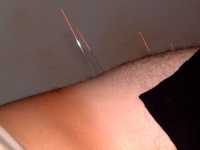PainRelief.com Interview with:
Prof. Wei Wang
Department of Neurology,
Tongji Hospital, Tongji Medical College,
Huazhong University of Science and Technology,
Wuhan, Hubei, P.R. China

PainRelief.com: What is the background for this study?
Response: The burden of migraine is substantial, resulting in considerable economic and social losses. The latest Global Burden of Disease Study showed that 1.25 billion people had migraine in 2017. A significant number of patients are still not responding well to drug therapy, or cannot tolerate the adverse effects of drugs, or have contraindications, which can lead to low medication compliance, headache chronification and acute medication overuse. Prophylactic drugs should be recommended for migraineurs who have at least four headache days per month, but only 13% of patients reported current use of preventive drugs. Besides, ineffectiveness of and/or contraindications to migraine medication affect 10-15% of people with migraine. Hence, a need exists to investigate non-drug interventions.
Previous studies suggest that acupuncture works particularly well on a range of pain disorders. However, clinical evidence for the benefit of manual acupuncture for migraine prophylaxis remains scarce. Appropriate placebo control settings and successful blinding are two critical elements in addressing this challenge. Sham acupuncture involving penetrating needles should be avoided in clinical trials. Previous acupuncture research has often used penetrating sham acupuncture, involving needling non-acupuncture points, needling irrelevant acupuncture points, or superficial needling. However, whether the needle is inserted into an acupuncture point or a non-acupuncture point, it could produce a physiological effect. Comparisons between true acupuncture and sham acupuncture might also be biased by unsuccessful blinding. To ensure an inert placebo control and successful blinding, we recruited acupuncture-naive patients, using non-penetrating sham acupuncture at heterosegmental non-acupuncture points as the control, and designed the same procedures to perform the same rituals as much as possible in the manual and sham acupuncture groups.
PainRelief.com: What are the main findings?
Response: The main findings are as follows:
Manual acupuncture, compared with sham acupuncture, resulted in significantly greater reductions in the mean number of migraine days (3.9 (SD 3.0) v 2.2 (3.2); adjusted difference –2.1, 95% confidence interval –2.9 to –1.2) and migraine attacks (2.3 (1.7) v 1.6 (2.5); –1.0, –1.5 to –0.5) during weeks 17 to 20 after randomisation. Sham acupuncture resulted in a minor reduction in migraine attacks compared with usual care (1.6 (2.5) v 0.4 (1.3); –0.8, –1.4 to –0.2) during weeks 17 to 20.
PainRelief.com: What should readers take away from your report?
Response: When discussing prophylactic treatment strategies with patients, clinicians should provide them with information about acupuncture as an option.
PainRelief.com: What recommendations do you have for future research as a result of this work?
Response: The timeframe of this study may be not have been long enough to see a long lasting effect. In the future, trials with longer follow-up periods are needed to assess how long the effects of manual and sham acupuncture last.
PainRelief.com: Why did we choose manual acupuncture instead of electrical or automated systems of acupuncture in this study?
Response: De-qi is an essential
concept of traditional Chinese acupuncture. Our previous study (CMAJ. 2013)
showed that acupuncture with de-qi sensation had a greater therapeutic
effect, which indicated that the intensity of the acupuncture stimulus must
reach a threshold to elicit de-qi sensation, which plays a pivotal role
in achieving the best therapeutic effects.
The Editor-in-Chief of the Canadian Medical Association Journal (CMAJ) wrote an
editorial and concluded that perhaps it is time for acupuncture to become more
mainstream. CMAJ press released our article, and then Reuters interviewed us
and reported our study. Annals of Internal Medicine, Nature China and other
media also reported our research findings. De-qi sensation is elicited
via the manual manipulation of needles, so we chose manual acupuncture as an
intervention.
Citation:
Manual acupuncture versus sham acupuncture and usual care for the prophylaxis of episodic migraine without aura: randomised, multicentre, clinical trial
BMJ 2020; 368 doi: https://doi.org/10.1136/bmj.m697 (Published 25 March 2020)Cite this as: BMJ 2020;368:m697
[wysija_form id=”3″]
[last-modified]
The information on PainRelief.com is provided for educational purposes only, and is in no way intended to diagnose, cure, or treat any medical or other condition. Always seek the advice of your physician or other qualified health and ask your doctor any questions you may have regarding a medical condition. In addition to all other limitations and disclaimers in this agreement, service provider and its third party providers disclaim any liability or loss in connection with the content provided on this website.
Last Updated on April 15, 2020 by PainRelief.com
